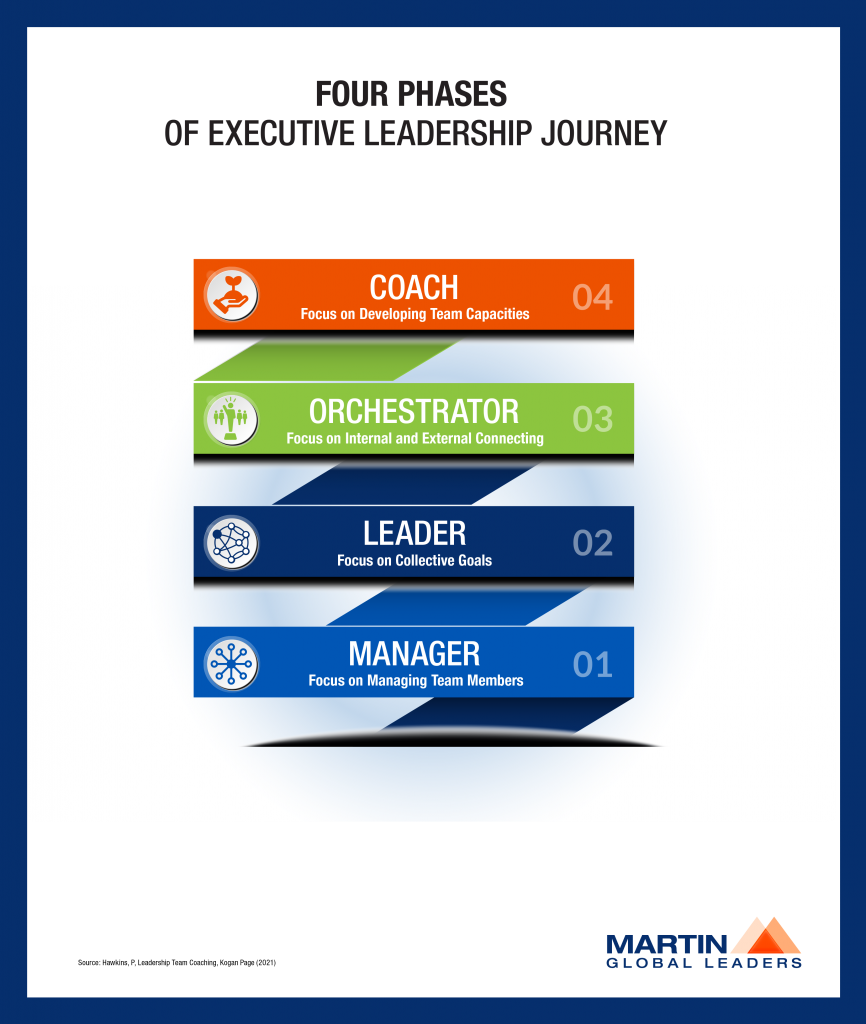- January 3, 2023
- Posted by: Craig Martin
- Category: Uncategorized

Today’s headlines are all about recession, inflation, corporate cutbacks, and reduced investment capital. But these times are when new innovations and business opportunities are born. Executive teams need to look beyond the current horizon and develop leadership strategies for the future. Yet, many top teams lack synergy and creativity because they are bogged down in immediate concerns or are managed in an obsolete hub-and-spoke manner. CEOs must uplevel their approach by coaching their executive team to look to the horizon and maximize collective intelligence and synergy.
MGL executive team clients have boosted their success via two approaches:
The Three Horizons
The three-horizons approach looks at the responsibilities of leadership by framing a comprehensive understanding of both the near and distant future.
- Horizon 1 – Between us and the horizon: 2023 deliverables (what’s here now) -e.g. controlling costs to reduce the company’s exposure to recession.
- Horizon 2 – Visible at the horizon: What we can see is coming towards us and must be addressed in 12-36 months’ time – e.g. economic up-cycle, more aggressive cyber-threats
- Horizon 3 – Beyond the horizon: Challenges and opportunities likely to emerge we must develop scenarios for in 5 years – e.g. war in Asia, technology transformation
Bottom line, it’s the executive team whose unique role is to be thinking ahead and make decisions that set strategy to win, now and years down the line. But is your executive team actively looking to the horizon and leveraging its collective intelligence? Sadly, we have seen CEOs who are bottlenecks that cap the full power of their teams due to their leadership approach.
Four Stages of CEO Leadership
In this leadership framework developed by Henley business school professor, Peter Hawkins (2022), there are four progressively advanced modes for the CEO’s leadership. Each represents a different fundamental mindset and approach to ultimately cultivate a collective leadership where the whole executive team together makes decisions for the enterprise rather than focusing on just their business unit or function.

- CEO as Manager: In this base level of the framework, the CEO is in control. Everyone on the executive team is accountable to them; CEOs hold leaders accountable their individual and business Horizon 1 KPIs. Hub and spoke structure is the norm, but this can’t scale as the CEO is the single point of failure.
- CEO as Leader: This next stage is a critical progression and improvement toward a cross-connected team. The CEO provides vision, sets goals, and allows people to determine how to meet their goals at Horizon 1 and 2. With the CEO still firmly in charge, which tends to lead to the heroic leadership model, also limiting the ability to tap into the collective intelligence of the team.
- CEO as Orchestrator: All members of the executive team have a full view of the enterprise and are able to make strategic decisions together for Horizons 1, 2 and even 3. The CEO can elevate her role to “leading the orchestra to create good music.” This approach is about marshaling resources from inside and outside the executive teams to make them more effective. This mode is about recognizing the talents of each individual working together as a team, just as an orchestra creates great music collectively using every person’s skill and ability versus being dependent on the boss.
- CEO as Coach: This team is already practicing collective leadership of the enterprise, using their individual abilities while working together. The CEO is coaching the team as a whole and developing its capability to be “fit for purpose” to tackle the Horizon 2 and 3 opportunities and challenges years ahead.
CEOs and c-level executives need to continuously examine and uplevel their leadership styles if they want to scale their company for the future. If you are a top leader seeking advanced leadership and executive team development to help you seize big opportunities ahead, please contact Martin Global Leaders at [email protected] to request a free 30-minute consultation.

